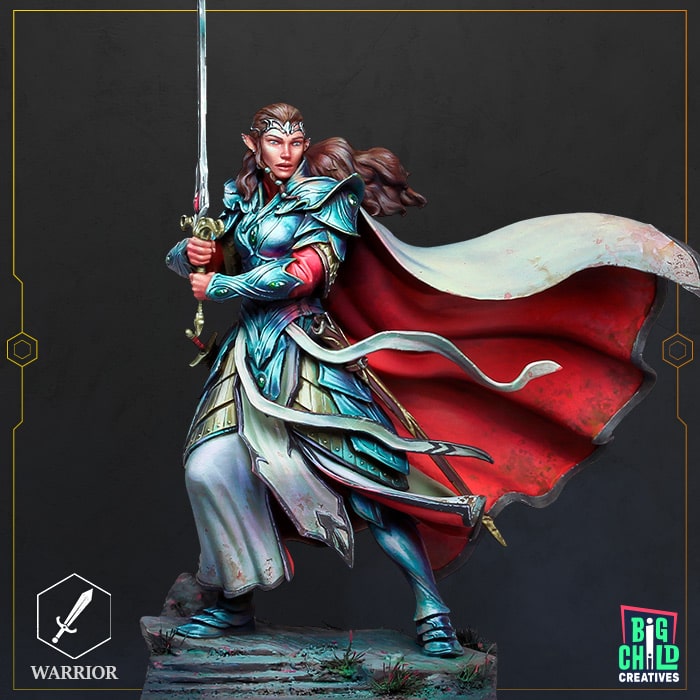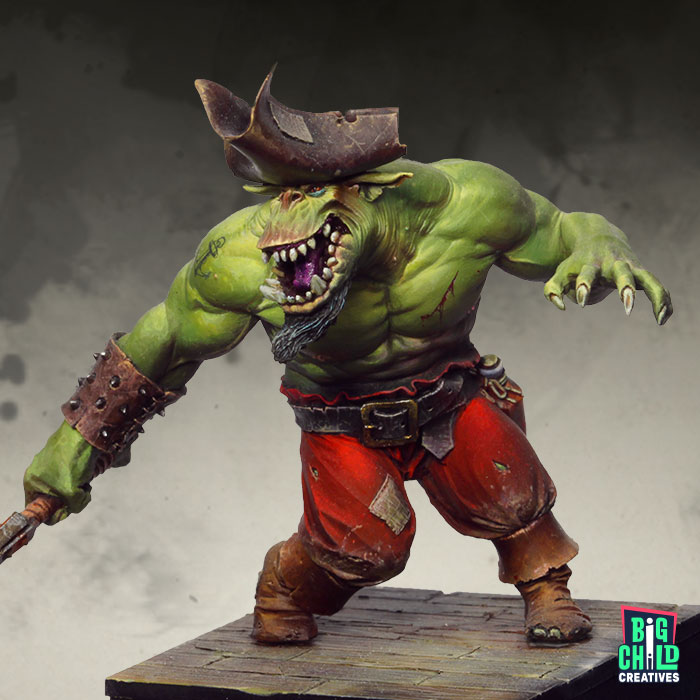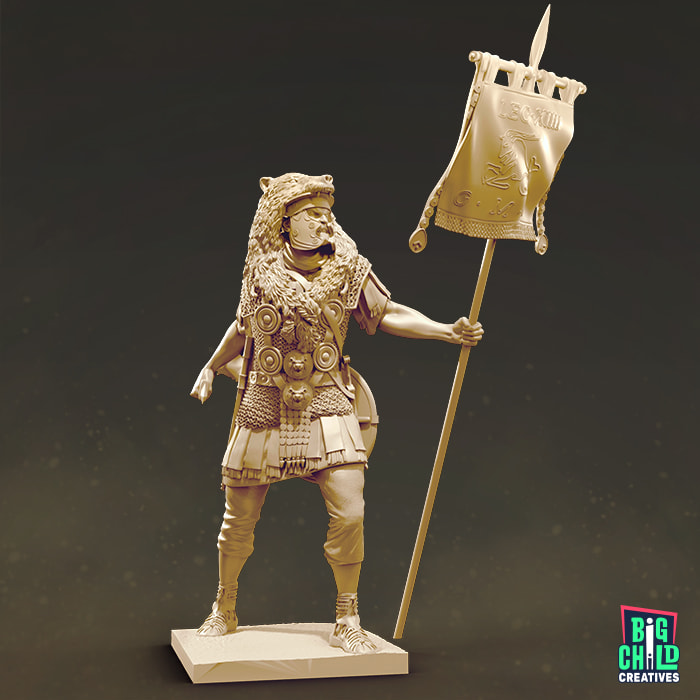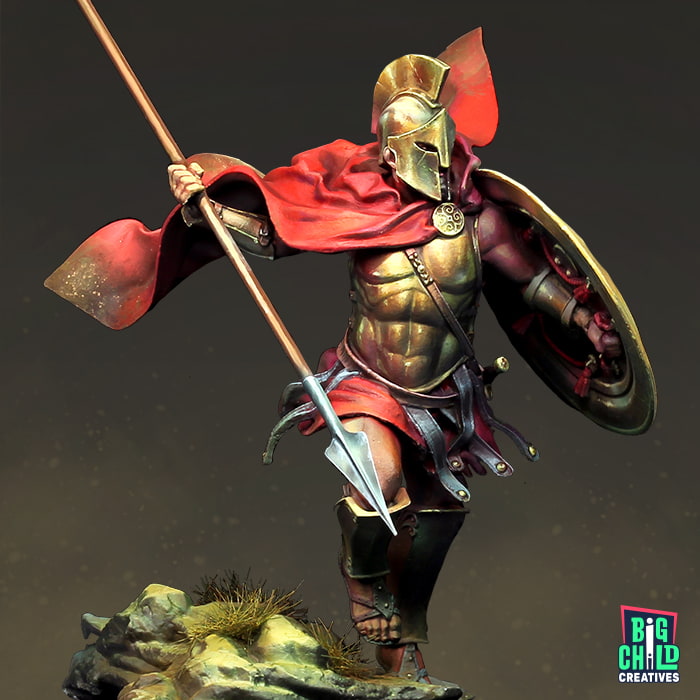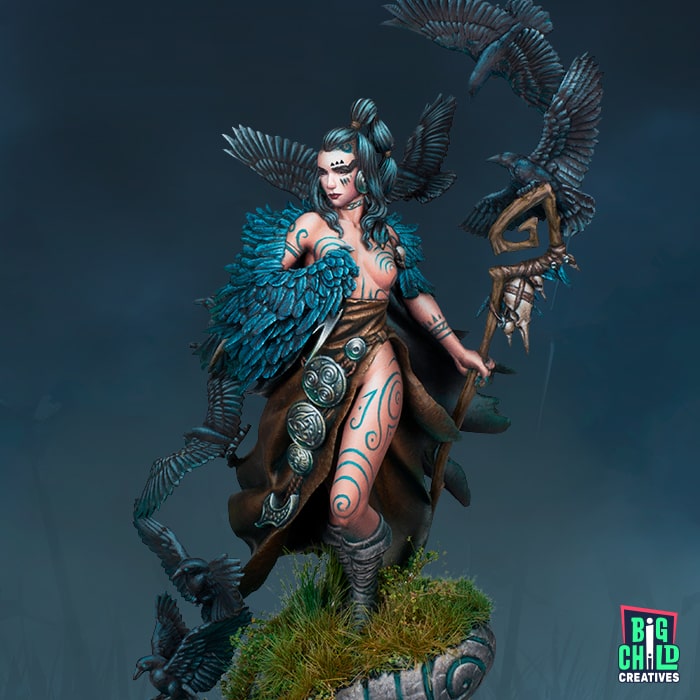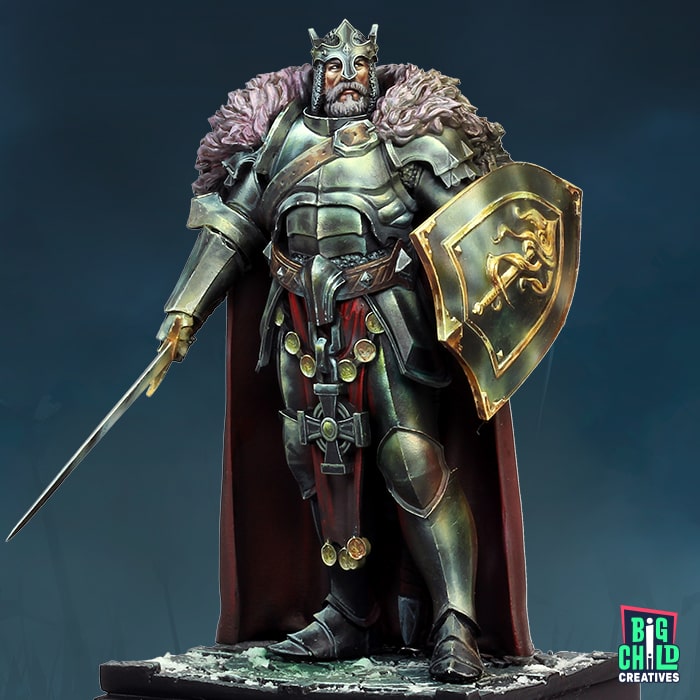
Fantasy miniatures
Fantasy miniatures steal the attention of fans of fictional stories and sagas, where heroes fight to win and get their rewards.
In this class of miniatures, figures of dwarves, dragons, elves, goblins, ogres and knights remain popular.
Fantasy miniatures 28mm or 75mm
A miniature fantasy figure is a scaled-down representation of the human figure. The construction of miniature figures consists of several phases: modeling of the figure, painting of the figure and construction of the terrain.
So, miniaturists do not usually create the miniature from scratch, but acquire figures in a kit in which they must join the pieces and proceed to paint it.
Regarding size, the most common figure sizes in the world of game miniatures are 20 mm (1:92), 25 mm (1:73), 28 mm (1:66), 30 mm (1:61), 32 mm (1:57) and 35 mm (1:52), while the most widespread figures for painting and collection are usually 50 mm (1:35), 54 mm (1:32), 60 mm (1:28), 70 mm (1:26), 75 mm (1:24), 90 mm (1:20) and 120 mm (1:15).
Model figures are scaled-down models depicting human figures, although they can also represent monsters or other creatures. Miniature figures can be obtained by various methods:
- Kit for assembly and painting: they are usually plastic, resin or white metal.
- Figures already assembled and painted to collect: they are usually plastic, porcelain or bronze.
- Construction from scratch: the modeler builds the figurine from the raw materials.
Miniature figures can be generic figures, such as a Luftwaffe pilot of World War II, historical figures, such as Napoleon, or fictional characters such as Conan.
Basically, the construction of miniature painting consists of the following phases:
Modeling of the figure
Consists of making with putty the body of the figure on the skeleton, usually made of copper wire. Once the putty dries, the clothes and the different accessories that complement it is made. Modeling putty is usually a two-component epoxy putty, which hardens when both are joined.
Painting the figure
Before starting to paint, the pieces that do not hinder painting must be joined, glue the figure to a provisional base so as not to touch the miniature with your fingers, eliminate mold lines or burr with a blade, polish the figure to remove any type of imperfections.
The miniature is then given a coat of primer, the figure is painted and a layer of varnish is applied to protect the paint.
Construction of the land
Once the painting of the miniature is finished, to provide the figure with an adequate atmosphere, a base must be found on which the land will be placed, with which it is intended to locate the figure at a certain time and place, real or fantastic.
The model maker who creates the miniature from scratch, using modeling putty on a wire skeleton, based on the information contained in history books, prints, novels, films or comics, is called a sculptor.
The figure created by the sculptor can be used as a master copy to create commercial figures, in which case the different parts of the figure are separated to create the copies, or it can be an original figure, in which case it will be painted.
Generally, miniaturists do not create the miniature from scratch, but acquire figures in kit in which they must join the pieces, proceed to paint it and place them in a terrain according to the characteristics of the figure.
Best fantasy miniatures
Miniature figures are commonly made of metal, plastic, resin, or paper, and are typically artistically sculpted and painted, making them collectibles on their own.
Although many miniatures of games are already sold painted, many fans of this type of games have made figure painting an important part of their hobby, which has greatly popularized the collection and elaboration of this type of figurines.
Figures or miniatures are used in various types of games, such as:
Dungeon Games
Games in which characters explore a large dungeon or labyrinthine structure, such as a castle or cave, fighting various enemies, such as dragons, orcs, or any other evil creature or monster, collecting the treasures they protected.
Figures used in dungeon sets generally represent a single character advancing on a board, map, or diorama that reproduces the underground galleries of the dungeon.
War games
Games that recreate an armed confrontation whose rules simulate the technology, strategy and military organization used in the environment in which the game takes place, whether historical, hypothetical or fantastic.
In war games, although miniature figures can be used to represent a single character, they most commonly represent troop units made up of several combatants, such as battalions, divisions or regiments.
Miniatures games
Games in which the moving elements of the game, usually plastic or metal miniatures, do not move on a board equipped with squares but on a model or a diorama, in such a way that the movements are counted in centimeters or in other units of measurement.
In miniature games, miniature figures can represent both a single character and troops consisting of several combatants, such as battalions or regiments. Miniatures game figures are marketed individually, but can also be purchased in bundles with a specific thematic content or with random content.
Role-playing games
The painting of miniatures has been popular, as more and more role-playing game fans are working hard to paint their army and make it look impressive. Painting studios have also boomed, allowing players without much skill in painting to also customize their collections.
These are the games in which each player plays a certain role, role, or personality that they don’t normally do. In role-playing games the use of a board is optional, so if used, figures that symbolize the position of each character will be used.
Board games
They are the board games that use a board as a support and as a fundamental part of their game system. In board games, the ranks of weapons and the movements of tiles or miniatures are counted in squares.
Strategy Games
This is how the games in which players have to develop strategies and manage the resources available to achieve the final goal are known, so the intelligence factor and planning skills are basic to achieve victory in the game.
How to paint fantasy miniatures?
Painting miniatures is a popular hobby among many board game enthusiasts. It is a very creative activity that requires a lot of patience and dedication. Any artist can paint fantasy miniatures.
If you are thinking of starting to paint miniatures, here are some tips to get you started.
Choose the right material
To paint miniatures, you will need to have the right brushes as well as paint. The brushes should be very fine so that you can paint the details of the thumbnails. The paint must also be of good quality so that it adheres well to the surface of the miniature.
Prepare your work surface
Make sure your work surface is clean and dust-free. You can use some spray paint to protect the surface and prevent the miniatures from getting dirty.
Paint a base layer
It is important that you paint a base layer before you start painting the details of the miniatures. In this way, you can better cover imperfections and avoid seeing the details.
Paint the details
Once you’ve painted the base layer, you can start painting the details of the miniatures. You must have a lot of patience and dedication to paint each of the details of the miniatures.
Let the thumbnails dry
Once you have finished painting the miniatures, you should let them dry well before using them. If you don’t let them dry thoroughly, the miniatures could be damaged.
Following these tips will help you paint miniatures correctly, and you will get fantastic results. Painting miniatures is a very fun and relaxing activity, so do not hesitate to start doing it.
Where to get fantasy miniatures?
In Big Child Creatives we have a series of collection figures from fantasy miniatures. In addition, we have hundreds of special materials for this art.
What are Bigchild Creatives fantasy miniatures for?
The field of role-playing games stands out for the customization in many of its aspects, because each player usually has a different style of play and a unique army to take advantage of, as well as different strategies to win.
This translates into the appearance of the figures, since they come from the factory without any color, so that players can give it the look they want.
The ability to customize the figures allows different interpretations of the same figure to be seen: for example, some players choose to give them vivid and striking colors, while others opt for a ‘dark’ and spooky look, all this applied to the same figure.
Thanks to this, a community has been formed within the hobby of role-playing games: that of the art of painting miniatures. Some even do not even play, but simply collect the figures and customize them, either on their own or with the help of a studio, to show them and thus have an interesting decoration for their homes.
Within this scenario, it is where you can see that the miniature painting service is so lucrative.
There is enough demand to get figures that not only look beautiful, but have shades, lights and textures that make them stand out. This is why so many studies have emerged willing to carry out this task.
The painting of dioramas is also quite practiced and requested. The dioramas are a kind of model that represents a specific scenario, on top of which the miniatures can be placed, serving as a more striking and colorful type of board.
Just like miniatures, players also strive to have dioramas that look interesting and surprising, especially in fantasy games, where dioramas are often made with movie scenarios. Painting studios are often asked to decorate these models in order to give them a prominent and unique appearance.
What paint is used to paint fantasy miniatures
In Bigchild Creatives we have a series of special paints to work in fantasy miniatures. However, you can use any of the following types of paint in your art:
Lacquers
Synthetic lacquer is a paint with a fairly strong solvent, with very high adhesion, which is often used to give the base layers in modeling.
Its disadvantage is that, having a strong solvent, it cannot be applied lightly on any surface. Of course, you can not apply lacquer on other paints such as enamels and acrylics, as it dissolves them.
Therefore, lacquer is often used as the base layer. Yes, it can be painted with enamels and acrylics on lacquer, but not the other way around.
Enamels
Glazes were for a long time the most used paint in modeling, until acrylic paints began to become popular. They have an oil base and, therefore, need the use of solvents to be able to dilute them.
The strong point of glazed paints is their high covering power. The disadvantage is that they take a long time to dry, especially compared to acrylic paints. Once the enamel paint is applied, it can take about 6 hours to be moderately dry, and if we want to apply a new layer of paint we must wait at least 24 hours.
Acrylic paints
Acrylic paints are the most used in modeling for airbrush painting, as they are diluted well, and more and more brands have ranges of acrylic airbrush paints.
The advantages of acrylic paints are:
- They have a water base (and not oil), so they are diluted with distilled water, alcohol, in addition to the specific diluents of each brand. Thinners for acrylic paints are much less corrosive and less toxic than enamel thinners.
- They dry faster. They can dry to the touch in 20-30 minutes and completely in an hour. To apply a second coat, just wait 8 hours. Much less than with enamels.
Normally, a coat of primer is usually given before painting with acrylic paint.
Oils
They use an oil base, so they can be mixed with enamels, and are always applied with a brush because if they are used with an airbrush they can jam it. They are mainly used for somewhat advanced finishing effects, so here we will not go into detail in this type of painting.

